On the hunt for ginseng: Hoosiers search woodland areas for root that's valuable and now 'in season'
There's a different type of season in Indiana that began Sept. 1 and runs through the end of the year. Participants don't have to carry a firearm, muzzleloader or bow and arrow; instead, all that's required is keen eyesight and lots of walking through the woods with a trowel or knife for digging that's required.
The "prey" is a woodland plant that takes years to mature. The bright red berries nestled between clustered leaves can be difficult to spot but the reward is an often-person-shaped root that's in high demand and expensive.
The plant, ginseng, grows in the shaded forest floors in the eastern portion of North America, where people have harvested it for generations. The Convention on International Trade in Endangered Species (CITES) Treaty regulates the harvesting, sale and distribution of ginseng.

My Favorite Ride: The 1957 Ford tractor that Richard Peden owned is still on the farm
Wild ginseng in Indiana is considered a vulnerable species by the U.S. Fish & Wildlife Service, which limits the export of wild ginseng to roots that are at least four years old.
The regulations, and the rewards
Laura Minzes is the state's ginseng coordinator with the Indiana Department of Natural Resources' nature preserves division. She's in charge of keeping track of how much ginseng, both wild and cultivated, is harvested each year. Besides ensuring the roots harvested are the correct age, she's also looking out for the survival of the species.
In 2021, there were 215,000 pounds of wild ginseng harvested in Indiana and a little over 15 pounds of cultivated ginseng. Minzes said those figures are on par with the ginseng taken in the past three years. She explained cultivated ginseng, which is grown as an agricultural crop, is popular in northern Wisconsin.
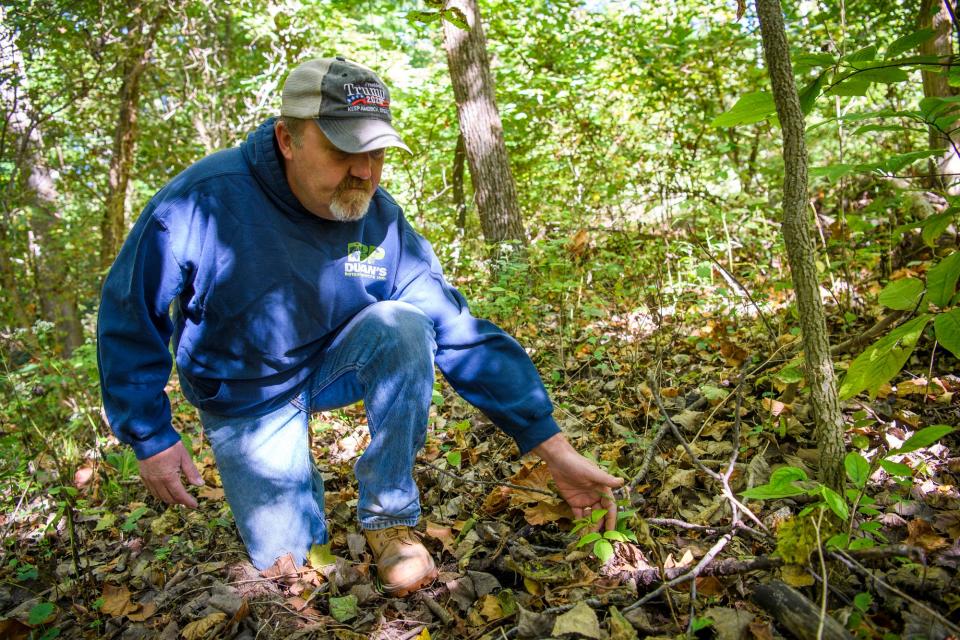
The season for harvesting ginseng in Indiana runs Sept. 1 through Dec. 31. Any plant that's harvested — in order to take the roots, the plant is killed — must have at least three clusters, known as prongs, of leaves. That ensures the plant is at least four years old. Each of the prongs has five leaves. Oftentimes the red berries or remaining seeds are hidden in the space between the leaf clusters.
With the cooler temperatures, many of the ginseng leaves are beginning to turn yellow, making them easier to spot in the undergrowth of wooded areaa. Brent Duncan, owner of Duncan's Botanical Products in Smithville, knows how to locate them in the woods outside of his business. He's one of Indiana's 19 ginseng dealers, having taken over his father's business, which was established in 1972.
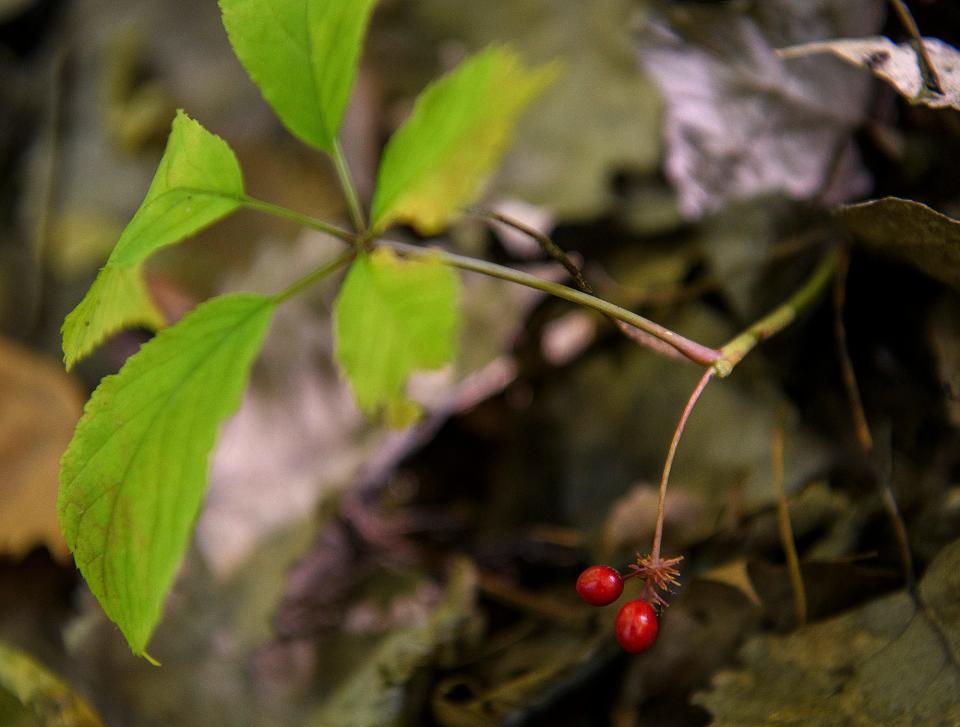
Duncan said most people dig about a half-pound of ginseng in a day. But it can add up, as Duncan proved, showing a plastic bag with about 38 pounds of fresh ginseng that he said was worth about $7,000. Those roots will be worth even more after they are dried, which Duncan said makes each root worth about $600 a pound instead of $180-$200.
"It's basically a vegetable," Duncan said. "You can't keep it more than three weeks."
Duncan said it's essential to dry roots before shipping them, so they'll last. He has two primary customers he sells ginseng to, and those roots travel to Hong Kong and are sold throughout Southeast Asia. The roots are primarily used in tea and for cooking as a medicinal additive, he said. About one-third of Duncan's business is dealing with ginseng, which amounts to about 1,000 pounds of roots a year.
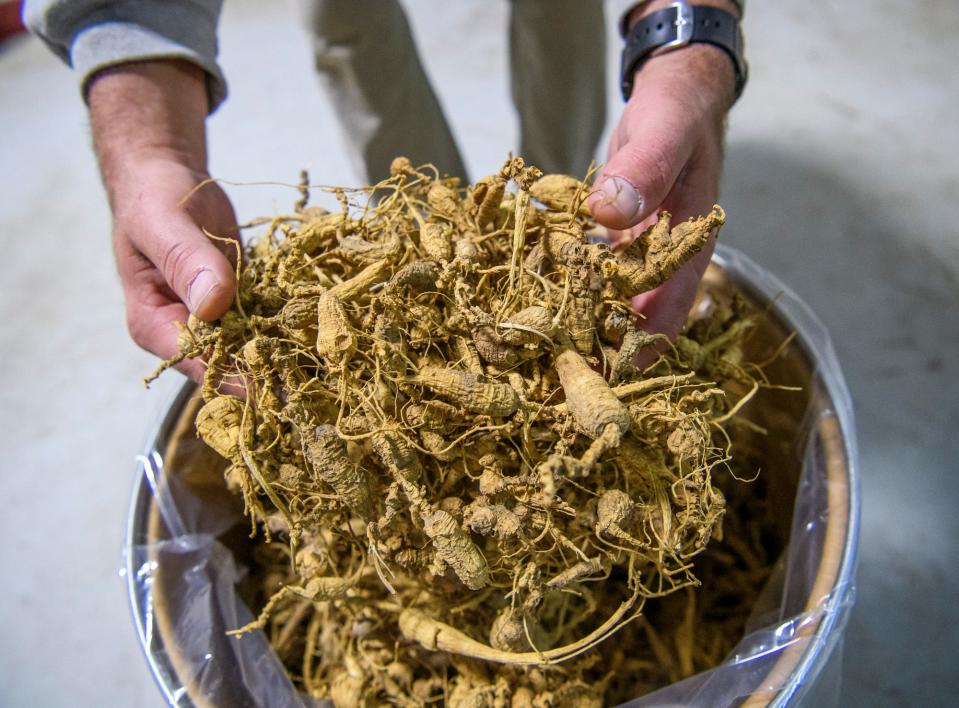
While some of the roots are only about five years old, Duncan has at least one root that has bud scars that show it's probably about 40 years old. Even so, the root isn't as large as some other roots he has that are much younger.
"Age has nothing to do with the size of the root," he explained, adding it's the growing conditions, especially the soil, that makes the difference.
Duncan knows that, in large part, because he's purchasing ginseng roots from people in some 30 Indiana counties. The business is time consuming, he said. There's a lot of risk involved because the markets fluctuate and there are state and federal regulations that must be met.

COVID-19 slowed production for the past couple of years, Duncan said. He believes that was due to both people catching COVID as well as receiving more government money, lessening the need to sell ginseng and other roots.
Mike Bartlett, who works for Duncan, agreed the past couple of years were a little slower. "This year it's been better," Bartlett said.
Both Duncan and Bartlett shared how important it is for people digging up ginseng to properly plant the red ripe berries and seeds near where they dig up the plant. Placing the seeds in the hole left by the plant isn't the correct way to ensure more ginseng grows in future years, Duncan said. Instead, he advises people to rake back the leaves in an area, dig into the soil in a line that's about a half-inch deep and then plant the seeds.
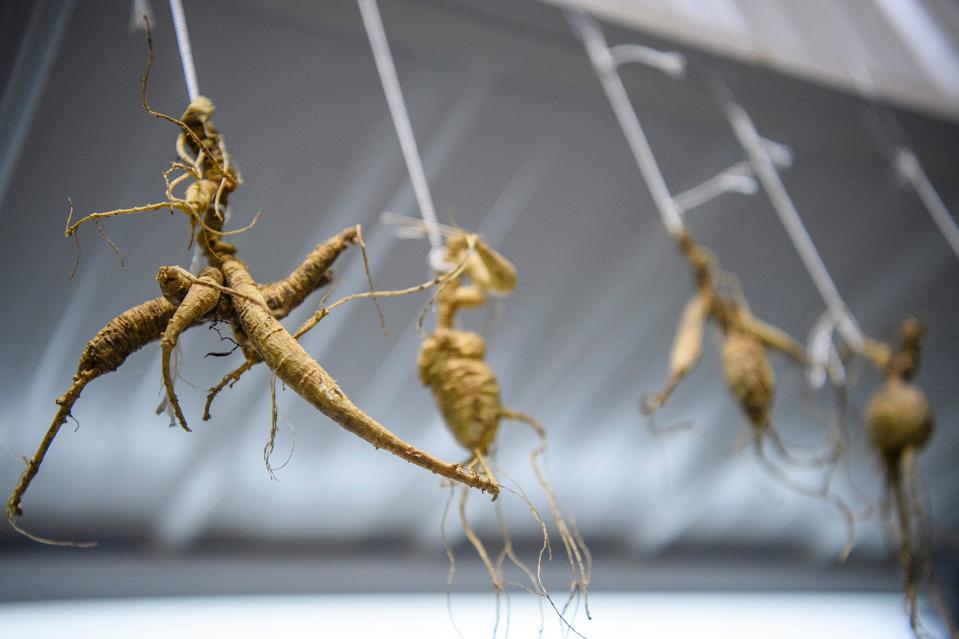
In the past few years, Minzes has overseen moving all the data for ginseng to an online form, which has helped law enforcement officials more quickly see what's been harvested, where and by whom.
"Today it's at their fingertips, they can literally get it in seconds," Minzes explained, adding, "There was a lot of illicit activity going on ... similar to with the scrap metal industry."
But that has diminished, she said, with improved access to current data.
For anyone looking to go out to harvest ginseng, they should know they cannot harvest it on federal property, including in the Hoosier National Forest, or on state property, including state forests and parks. Anyone hunting for it on private property must have written permission from the landowner. All harvesting must take place between Sept. 1 and Dec. 31. Each of the plants must have at least three prongs (explain) and each prong must have five leaves.

The Indiana Department of Natural Resources has a list of the regulations on its web page on ginseng at https://bit.ly/3y6VoyS. Lt. Angela Goldman, with the DNR law enforcement, said there are two major things law enforcement is looking for this time of year: people who harvested ginseng before the season began and people who are hunting ginseng without permission or on state property.
Goldman explained harvesting ginseng before the season begins is illegal because the fruit and seeds aren't yet mature and therefore new plants can't grow in place of the ones that are harvested. It's a problem before Sept. 1, not after the season ends on Dec. 31 because once ginseng plants lose their leaves, it's almost impossible to locate them.
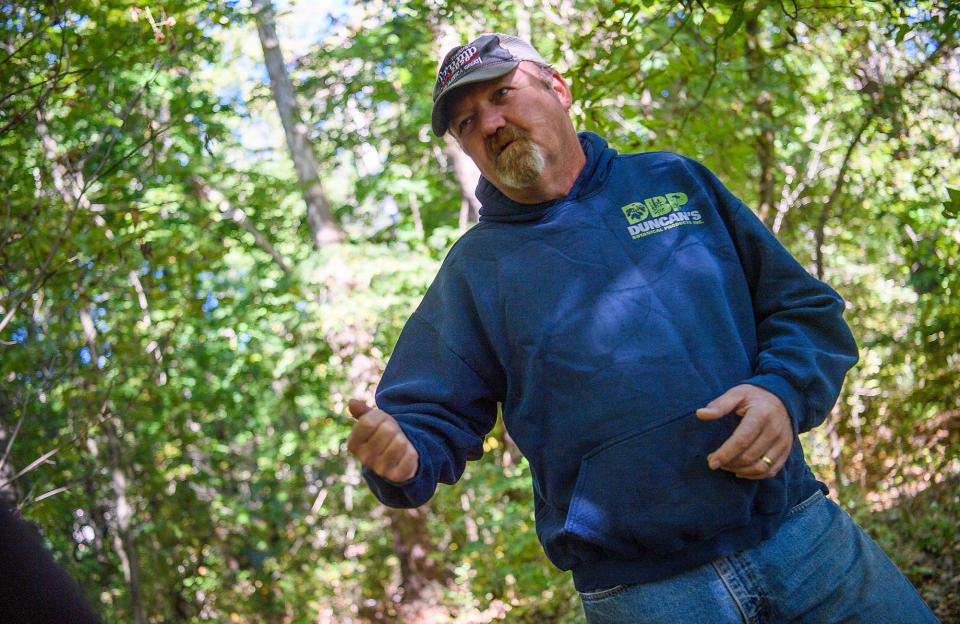
Property owners who have trail cams this time of year will contact state law enforcement when they see people out digging on their land, Goldman said. "Right now is the height of ginseng season, now that it's cooling down. ... We've got lots of diggers out there now."
Oftentimes people without permission will work in a two-person unit, with one driving the car and the other hunting for ginseng so there's no vehicle stopped beside the road.
She said any property owner who sees someone walking on their land with a trowel, knife or bag with roots, is encouraged to call the DNR central dispatch center at 812-837-9536.
This article originally appeared on The Herald-Times: Ginseng Indiana: Hoosiers on the hunt for the plant this season

